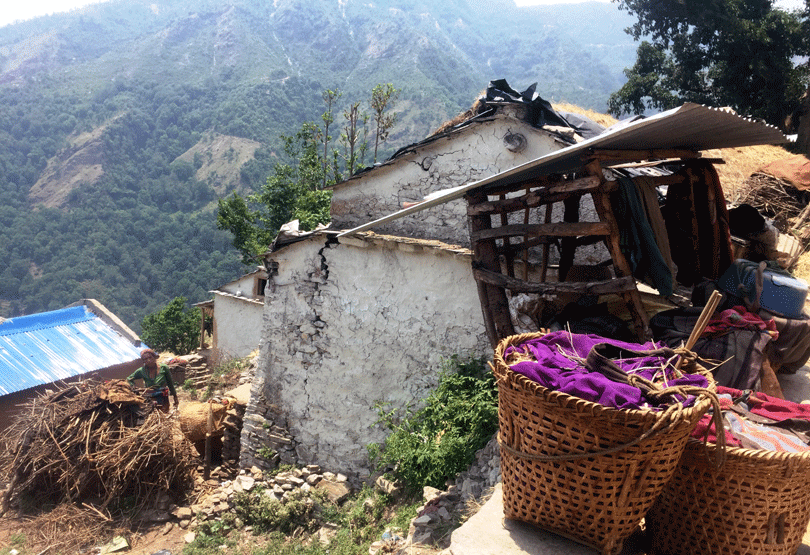
Bajura, a remote district in Sudurpaschim Province, is home to cascading mountains and rugged terrain. For travellers seeking to enjoy pristine natural beauty, it is the perfect place. However, for people who live here, life is not as beautiful as it seems to outsiders.
Living here is challenging not just because hospitals, schools, and markets are far, but also because of the recurrent landslide triggered by intense rainfall.
Add to that, climate change, poor governance, and haphazard construction of roads. But why do people continue to live near landslides despite the myriad of problems they face?
The answer can be found in the Bajhedi landslide, spread over the 7 square km covering Budhinganga Municipality and Khaptad Chhededaha Rural Municipality.
The landslide, one of the largest in the district is believed to have begun around 50 years ago, has affected more than 10 settlements in Budhuganga and Khaptad Chhededaha such as Guiban, Gumlagaon, Bajedi, Nimani, Densayal, Gadtola, Basali, Belkatiya and Kalapani, although it hasn’t killed anyone.
‘We don’t have money to buy land elsewhere’
As monsoon clouds, which bring over 80 per cent of the annual rainfall in Nepal, hover over the country, the people of Bajura, especially the poor, find themselves in trouble as they cannot move to safer grounds.
“We do not have money to buy land in other places and we have a loan to repay in the village. We cannot leave without repaying the loan,” says Piuli Damai, a resident of Khapdad Chhededaha-2.
While Damai and her community members understand that a landslide is imminent, there’s little they can do about it. They feel helpless as they do not have access to basic services, which often determine a community’s capacity to adapt in the face of disasters, and because they simply do not have the resources to do anything. According to the National Planning Commission, Sudurpaschim Province scores 0.230 on the multidimensional poverty index, the highest in the country. In a landscape prone to natural disasters, 51.22 percent of the population lives below the poverty line.

Social stratification: Barrier to collective and collaborative problem solving
If poverty, disasters and climate change were not enough, the poorest of the poor in areas such as Bajura need to deal with social stratification based on caste, occupation, and income. It is observed that during the time of a disaster, people receive support proportional to their social position. Also, most of the people hesitate to ask for the support beyond their social groups closing the door for the possibility of collaborative efforts to resolve problems. If a household moves to a new place, it takes time for the people to form such social groups and this makes life difficult.
Sentimental attachments 
Nanda Kala Nepali from Bajhedi is a mother to three sons and three daughters. Her son recently bought a house in Dhangadhi and invited her; she lived there for about a month. She shares her experience, “Dhangadhi is a big city, people come from different parts of the country and they do not care about each other.”
“One can buy anything they want including food, fruits, there is a big market with roads everything is there, but feels nothing as compared to here. We do not have such facilities in our place but we enjoy living here, we have our childhood memories here and it is hard to leave.”
She now lives in a village only about 900m from the massive landslide with her husband. Nanda Kala is just an example; there are many who are sentimentally attached to the place.
A disaster-in-waiting
“We are waiting for our turn to be swept away, ” says one of a senior citizen during our consultation near the Bajhedi village. Communities are living as close as 400m from the main landslide, which is growing in size every year.
Our learning
From our visit to Bajura, we learned that dealing with a landslide is not only about dealing with the landslide itself but also addressing the human aspects of a landslide considering the socio-economic, cultural and emotional drivers to vulnerability.
Binod Prasad Parajuli is a research associate at Practical Action Consulting South Asia currently working on the Landslide Environmental Virtual Observatory ( LEVO) project led by Imperial College, London. This research project aims to build resilience to landslide hazards in two mountainous districts of Nepal, Bajhang and Bajura.

















